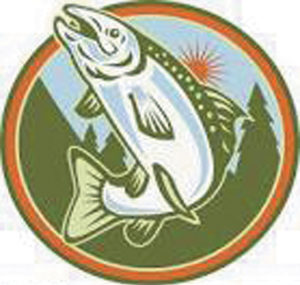 By Robbie Pavey
By Robbie Pavey Best Imitation of a Catfish: The Bullhead, made by Paw Paw Bait Co. of Paw Paw, Michigan, dates to the 1930s. The bait was short-lived — probably due to the difficulty in shaping its elaborate body. The Bullhead baits even had carved lips and hand-painted whiskers.
Most Artistic Rendition of Frogskin: The wooden “Wotta Frog” was made by Paw Paw Bait Co. of Paw Paw, Mich., from the late 1930s all the way into the early 1960s. Its “wotta frog splatter” paint finish is one of the most unique to the tackle industry. The lure’s articulated legs and lifelike bulging eyes make this one a collector’s favorite.
Best Imitation of an Entire Food Chain: The Thoren Minnow Chaser was an elaborate bait made by A.H. Thoren of Chicago around 1940. It was designed to mimic a fish chasing a fish, and features some of the most elaborate mechanical hardware ever used in a lure. It must have made quite a sight moving through the water! The lures are wooden and very well made. The metal parts are machined steel.
Happiest Baitfish Imitiation: The “Punkinseed” was one of many famous baits from the Heddon company in Dowagiac, Michigan. The tall, shaped “seeds” made their debut in the late 1930s with the larger wooden 740 series, soon accompanied by a smaller 730 series. It evolved over the years to include a tiny flyrod size (the Punkie Spook) as well as a host of bass-sized plastic versions. Their smiling mouths, cute shapes and lifelike renditions of bluegill, crappie, rock bass, shad and other species makes them a perennial favorite.
Most Likely to be Seen in an Art Gallery: Get out your best bottle of cabernet, dim the lights and push that Mozart CD. Now you’re ready to check out the workmanship of the Klipon lure, made in the 1930s by Green-Wyle Co., of Brooklyn, N.Y. The wooden baits have glass eyes and came in a variety of unusual and unique shapes. This one gets my vote for the most beautiful rendition of a natural perch finish.
Most Memorable Misprint For many decades: the Creek Chub Wigglefish was marketed as the bait that was used by George W. Perry to land the 22-pound, 4-ounce world record largemouth bass caught in Georgia in 1932. As it turns out, the famous fish was actually landed on a different Creek Chub lure – the Fintail Shiner. The revelation was made in an audio recording of George Perry himself – interviewed on Oct. 12, 1973, by an outdoor writer named Terry Drace, working at that time for Bass Anglers Sportsman Society. The long-lost audiotape surfaced and set the record straight.
Most Likely to be Found in Every Tackle Box from the ’30s to the ’60s: Creek Chub Bait Company’s Pikie Minnow originated around 1919 and evolved to include numerous sizes, from a tiny flyrod version to a huge musky and tarpon bait. Although the colors varied, the basic body shape remained much the same. These lures later were known at the “Famous Pikie Minnow” because they were, indeed, famous – and they still are. Best Mechanical Amphibian: The prop-driven Live Action Frog, made by Action Frog Corp. of Long Beach, Calif., in the late 1940s, is a favorite among collectors of mechanical lures. This frog features a four-bladed stainless steel prop protected by a device at the mouth that looks like a dental retainer from our childhood. As the lure is retrieved, the prop turns a driveshaft that makes the legs kick open and shut. Its tall, handsome picture box is a plus.
Most Likely to Revolutionize Bass Fishing: William Shakespeare of Kalamazoo, Michigan, offered his “Revolution” baits around 1900. They were made of aluminum and floated on the surface in an era in which most lures were underwater baits.
Most Beautiful Unpainted Wooden Lure: The Clyde Hoage Spoon-Fin Minnow is a 1930s Minnesota lure with a finely machined set of animated metal fins. The Hoage Spoon-Fin was usually finished in natural wood. They are rare, and Spoon-Fin boxes are difficult to find, too. The Hoage Spoon Fin’s makers called it “The Perfect Minnow.”















Follow Us